Article and Photos by Rich Thom Except as Noted
Clinic Chair Rich Blake welcomed 21 to our first meeting of 2020. Rich was also the evening’s presenter giving, first, a comprehensive review of the 39th National Narrow Gauge Convention held last September in Sacramento. The four-day event featured 54 clinics; 7 modular groups; several special museum and shop tours; and 34 layouts open to convention attendees. Rich’s photos of contest models, dioramas, modular layouts, and the 9 layouts he visited all displayed very high levels of modeling skills.
Rich’s California visit culminated in a very unique event indeed: a special railfan steam-up on the Niles Canyon Railway (www.ncry.org) commemorating the 150th anniversary of the transcontinental railroad’s completion, featuring the newly-restored articulated logging locomotive the “Skookum,” a rare 2-4-4-2. Niles Canyon’s Clover Valley #4, a 2-6-6-2T also recently overhauled, was steamed up and double-headed with Skookum (Figures 1 and 2).
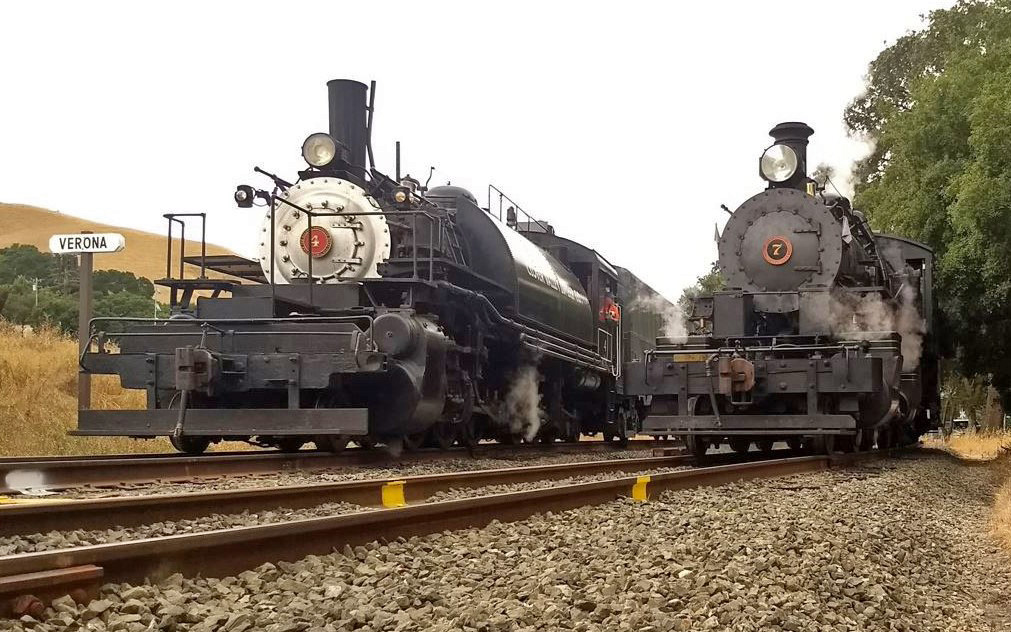
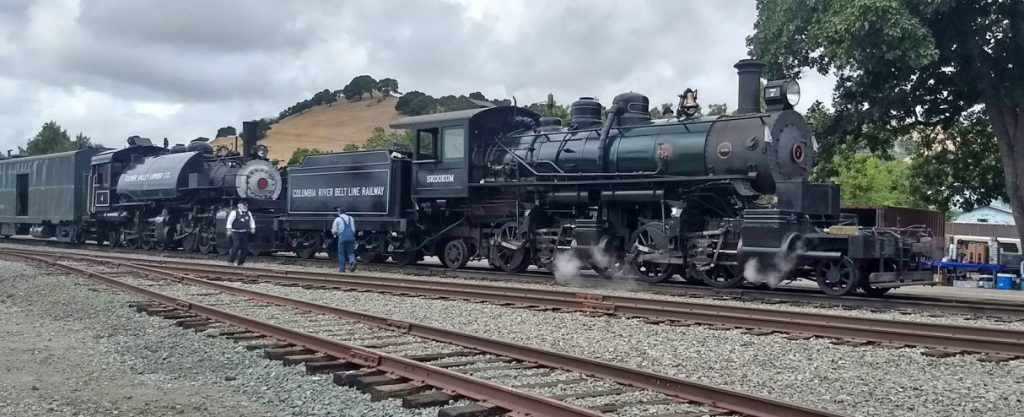
Many steam locos returned to service have dull histories, spending decades rusting away in city parks or museum backshops, but Skookum’s is especially colorful. Baldwin built the 2-4-4-2 Mallet (compound) for Tennessee’s Little River Railroad (https://littleriverrailroad.org/skookum) as their #126 in 1909, but it was too heavy for their rails and they returned it to the builder. Baldwin’s salesmen aggressively pursued northwest logging and short lines to unload their white elephant and in 1910 sold it to the Columbia River Belt Line Railway in Oregon, where the loco worked for ten years. (The Skookum is currently lettered for this first northwest owner.) After 1920 it worked on a number of Washington state lumber companies, the longest stint (1933-1955) with the Deep River Logging Co. as their No. 7. There, in 1955, it rolled off a trestle into a muddy streambed and was abandoned until pulled out five years later by rail enthusiasts. It was disassembled piece by piece and hauled out of the woods to Snoqualmie where it sat for 30 years. It was moved again at some point to Mount Rainier Scenic Railway’s grounds where it sat in a rusty pile for many more years. A succession of dedicated steam preservationists led by Chris Baldo of the Willits Roots of Motive Power team rescued the loco and Skookum was eventually restored by the Oregon Coast Railway shops in Garibaldi OR to running condition in March 2019. “Skookum” is a Native American word meaning “powerful, brave, sturdy” and this old Baldwin product surely lived up to its name. The first of its kind, Skookum encouraged Baldwin to market more articulated Mallets in the northwest, selling many.
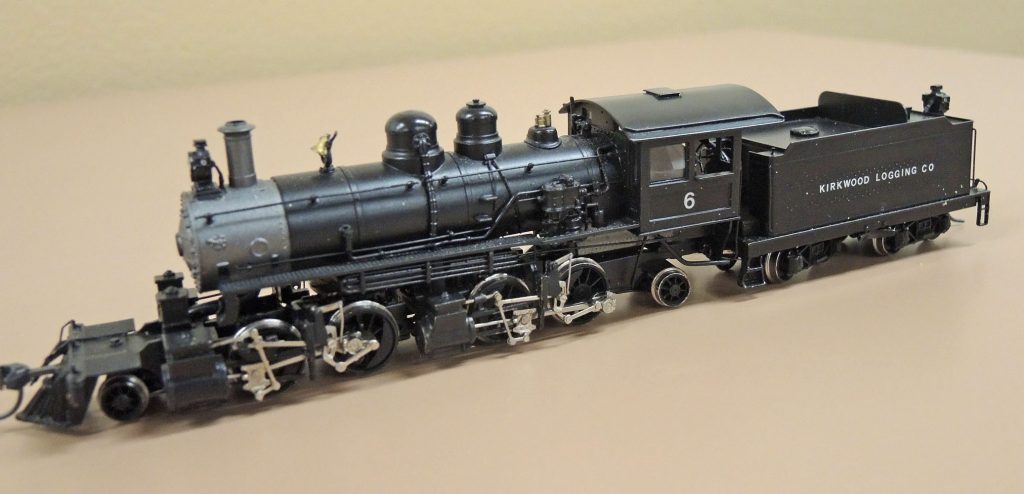
HO-scale reproductions of Little River Railroad #126 were imported by Gem Models, around 682 of them altogether, over the course of four runs in 1962, 1963, 1964 and 1982. Fig 3 shows one of the 1982 run, produced by Jonan. This run featured can motors and supposedly more detailing than the earlier versions. This beautiful example was painted and lettered by Dave Clarke, our clinic’s master of brass model rebuilds, after installing a sound decoder, speaker, and lights.
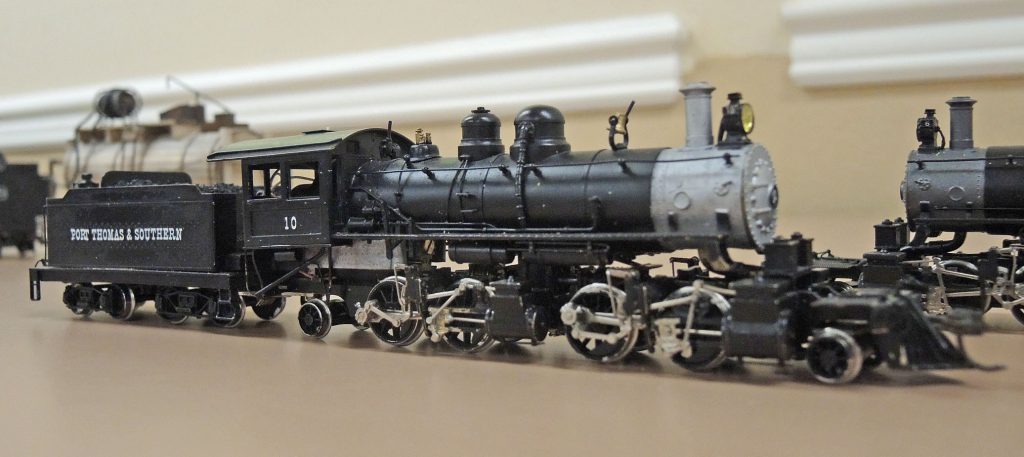
Fig 4 is another 1982 Gem 2-4-4-2 that Dave Clarke upgraded with DCC and sound, painted and lettered for Tom Hawkins’ HO-scale Port Thomas and Southern Railroad (styled after the Olympic Peninsula’s Port Townsend and Southern). Tom reports that it’s a beautiful runner.
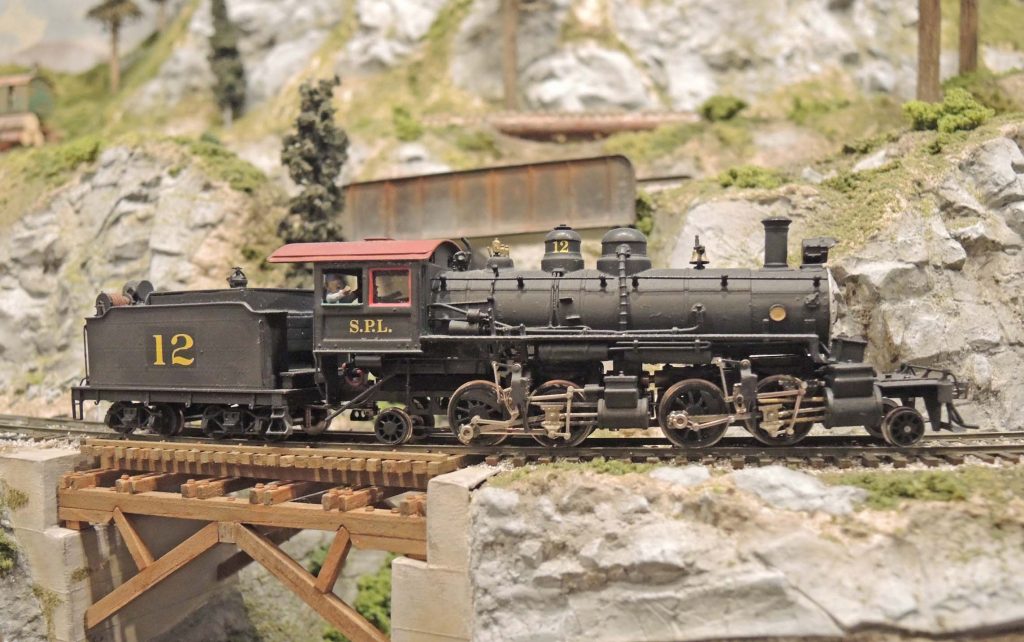
Your reporter plumb forgot to bring his “Skookum” to the meeting, but here it is anyway (Fig 5), photographed on his Coldwater Creek & Cascade Railroad. Rich’s model is from the first 1962 run that Gem imported, made by Akane Model Railroad Co. of Tokyo, and was found in a consignment sale in Sacramento. Gary Jordan, brass hat of the Gilpin Tram multi-gauge layout in Mukilteo, did the upgrade, replacing the open-frame motor with a can motor and installing a Tsunami decoder and 1-inch speaker. It’s the best-running loco on Rich’s layout, with stunning sound.
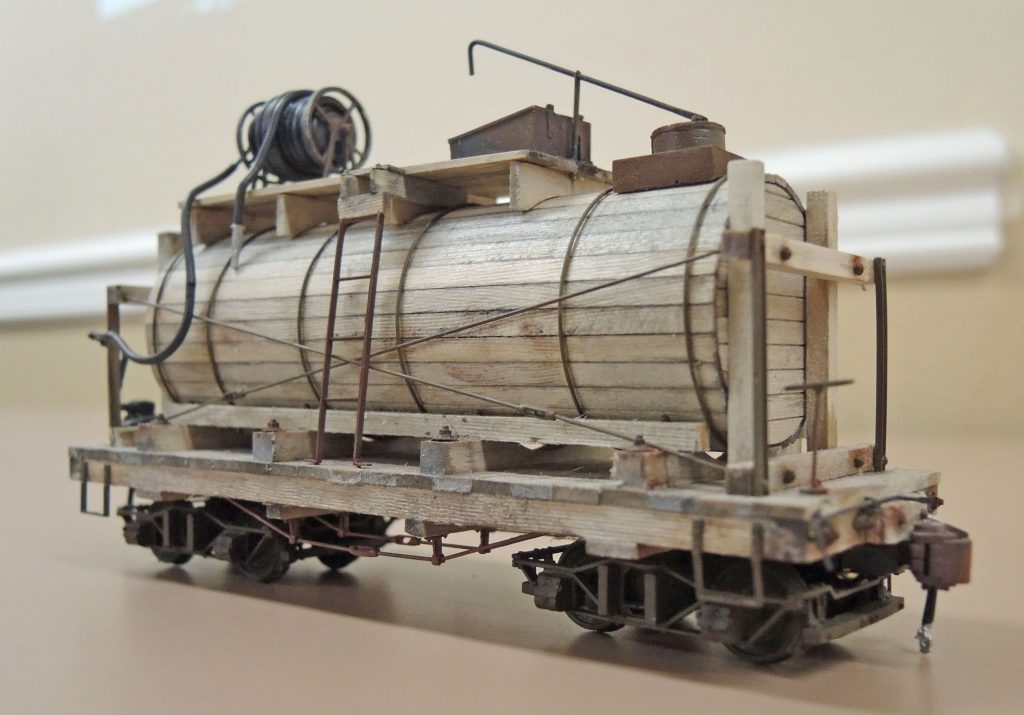
In other Show and Tell, Jon Bentz brought in a very nicely-done On30 Fire Car (Fig 6), a kitbash of a Morgan Hill kit (www.morganhillmodels.com). Good news: Jon’s new layout is nearing beta-testing for operations. We’re pleased since we are down to only two layouts hosting regular op sessions on Whidbey Island and it will be exciting to have a third to encourage ops enthusiasts to ride the ferry to our pleasant isle. No pressure, Jon!
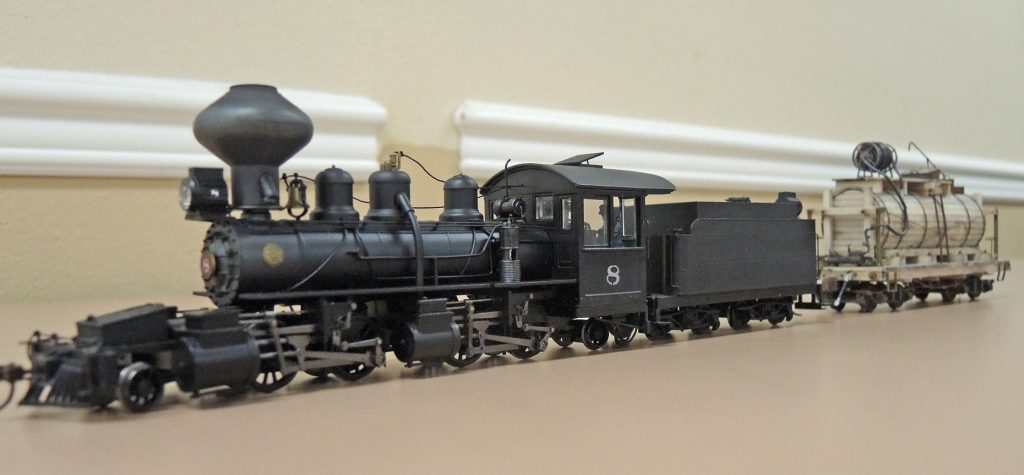
Finally, since “Skookum” was a theme for this meeting, Rich Blake brought his On30 Bachmann 2-4-4-2 to couple up with Jon’s Fire Car (Fig 7). It bears little resemblance to Skookum but at least it’s a 2-4-4-2 compound! This loco is slightly weathered with a few added details and features a Tsunami 2 decoder with unique “articulated” chuff sounds. Does anyone know Bachmann’s prototype for their popular 2-4-4-2?
###

No Comments Yet